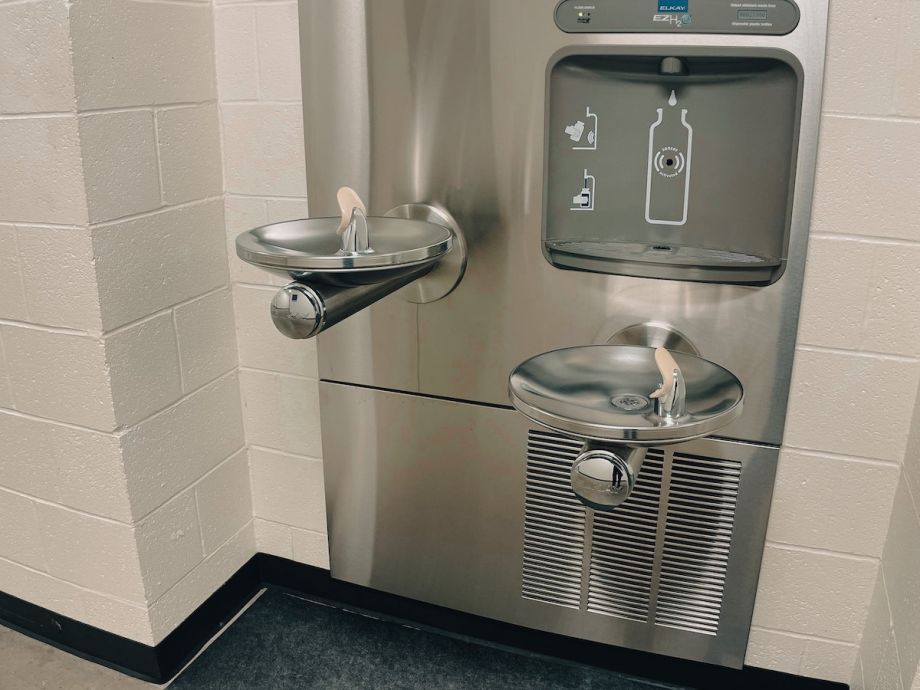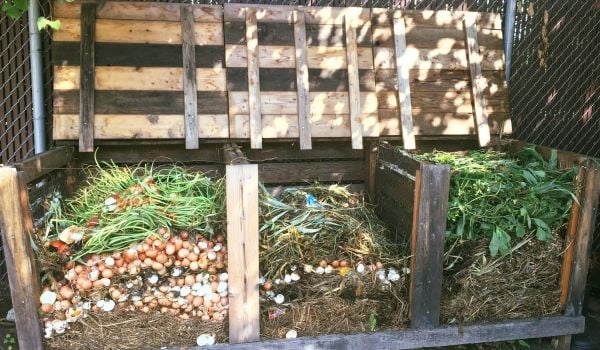This story was originally published by Chalkbeat. Sign up for their newsletters.
Asheley Ashittey remembers when the hydration stations scattered across Detroit’s The School at Marygrove wouldn’t stop blinking red.
It began in the fall of her sophomore year in 2021. The flashing lights that appeared atop the water fountains indicated that their filters needed to be replaced immediately.
Not long after the school year began, she went for a drink at a nearby station.
“I remember drinking out of the water fountains and having a metallic taste in my mouth,” Asheley says. Soon after, she stopped drinking water at school.
“At some points, I almost got dehydrated because I forgot to bring a water bottle and I couldn’t drink the water because I knew that I would get that metallic taste.”
Word quickly spread around the building, but the red lights continued to blink for over a year. Then this past November, Asheley’s earth science teacher recommended she and her 11th grade classmates test the water sources across the building as a class assignment. Equipped with multiple water testing kits, students in groups measured the water quality of the building’s eight stations.
What they found concerned them and prompted the Detroit Public Schools Community District and the Marygrove Conservancy, which operates the building, to act to ensure the safety of the water.
In a report shared with district and school officials ahead of the holiday break, students outlined their findings. Certain water fountains across the building had traces of lead, low water pressure, and a noticeable lack of consumable minerals such as fluoride and chlorine.
In the wake of their findings, students have aired their concerns with school, district, and city officials, advocating for increased testing, and routine inspection of water fountain filters and the building’s pipe infrastructure. Their advocacy and research prompted an immediate administrative response.
The results “were not necessary like imminent doom,” Amara Small, a Marygrove junior, says during a DPSCD school board meeting last month. But “they were not very good, and I feel like as a district, we have a higher standard for that.”
Amara, who is a student representative on the DPSCD school board, asked Superintendent Nikolai Vitti at the meeting to look into the water levels of Marygrove and other schools across the district.
“Students deserve to have safe water at the school that they are at,” she says. “Water is very important for education and living in general.”
Nationwide concern over school drinking water has risen over the past decade following news reports in places such as Flint and Benton Harbor, Michigan, dealing with concentrated levels of lead in water sources. In 2018, DPSCD found elevated levels of lead and copper in many of its schools. Through fundraising efforts over the next year, the district purchased and installed more than 500 water hydration stations. Those stations use filtered drinking water systems capable of removing lead.
The Environmental Protection Agency recommends drinking water contain zero amounts of lead and no more than 1.3 mg/L of copper. Lead and copper exposure can lead to health problems ranging from stomach pain to brain damage. Both fluoride and chlorine are allowable in trace amounts due to their ability to prevent tooth decay and kill harmful bacteria.
Using three different water testing kits and checking for as many as 20 different minerals and contaminants, Marygrove students conducted multiple samples at each station.
The results show average lead levels of 1.7 parts per billion, well below the EPA’s action level of 15 parts per billion.
Fluoride levels averaged .024 milligrams per liter of drinking water, below the Center for Disease Control and Prevention’s recommended level of 0.7 milligrams of fluoride per liter.
DPSCD annually tests its hydration stations at all of its schools, Vitti says. The district additionally instructs custodians to regularly replace filters.
“We have not had concerns with high levels of lead or other concerns with the water,” Vitti says. “Districtwide, I feel confident that with the level of testing that we’re doing, we’re ensuring that the hydration stations are working.”
But the School at Marygrove building, which is operated by nonprofit Marygrove Conservancy, does not “use the water hydration stations that we had implemented at other schools throughout the district,” he says. While DPSCD runs academic programs at the school, facility maintenance is overseen by the Conservancy.
Since being informed of the issue, DPSCD has provided both water bottles as well as continued testing at the school. Ongoing construction to the Marygrove school building, Vitti added, may be influencing the water levels and could require regular water main flushing to remove any minerals or sediments.
“We applaud the scholars at the School at Marygrove who tested waterspouts during an end-of-semester class assignment,” according to a statement from the Marygrove Conservancy.
“We acted on their findings over the holiday break by flushing pipes and replacing the filters. Follow up testing revealed shortcomings in some fountains, which have been corrected while temporary drinking water stations were provided in the interim. We remain committed to providing safe drinking water for everyone on the Marygrove campus.”
After over a year of not drinking from the hydration stations, Asheley went back to filling her water bottle in early March.
“I do feel satisfied and sort of vindicated that our filters are finally being changed, even though it took like almost two years of actually noticing what’s going on with the water,” Asheley says.
“But at the same time, it’s not entirely over because we still need to maintain a level of not only accountability, but also ensuring that the district is playing its part not only at the school level, but also at the city and state level.”
Chalkbeat is a nonprofit news organization covering public education.

Ethan Bakuli covers Detroit public schools for its students, parents, and teachers. Previously, he covered race, education, housing, and inaffordability as a reporter for the Burlington Free Press in Vermont. Prior to that, Ethan spent nearly two years as an intern instructor at New England Public Media’s Media Lab program, where he taught student journalists to report on topics such as food insecurity and mental health.




_600_350_80_s_c1.JPEG)











